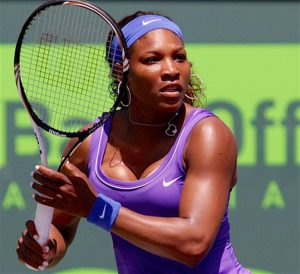By Noelle Theodoulou

Prior to college, I was referred to as “Beast” by my high school soccer teammates and coaches. The referee’s whistle at the start of every game activated a mode in me that was wired to fight for my team at any cost. Once in a while, I would receive yellow cards for playing too aggressively.
I channeled Marshawn Lynch’s “Beast Mode,” slide-tackling girls off the ball as we bolted down the sideline and rolling up my sleeves like I had Popeye biceps to intimidate my opponents. This behavior was incarnated by my intense passion for the sport. I fell in love with the persona I created for myself as a woman of strength who asserted herself on the field.
Our society welcomes displays of extreme emotions at sporting events. Soccer players will beat their chests as they scream out to the crowd for a successful goal; football players will clash their face masks as they verbally attack each other; hockey players will drop the gloves and transition into the mindset of boxers; the list continues. There are even examples of fans expressing similar sentiments of their enduring loyalty to their favorite athletes and/or teams.
The atmosphere at athletic events encourages a symbiotic relationship between the audience and competitors. This relationship entails the fans reciprocating the emotions of their well-loved athletes.
If people were to close their eyes and imagine such outbursts, a stereotypical image would emerge: men everywhere either bumping their chests in celebration or yelling profanities of frustration or disappointment.
So, where do female athletes fit into this picture?
On Sept. 18, Serena Williams was accused by umpire Carlos Ramos of receiving coaching in her U.S. Open tennis championship match against Naomi Osaka. She exhibited disapproval of the call by smashing her racket and communicating inappropriately with Ramos. The repercussions for her actions began with the deduction of one point which then escalated to a game penalty, resulting in a match loss.
Following Williams’ final match, she was fined $17,000 for committing three offenses of acquiring coaching, destroying her racket and being “verbally abusive”.
“I can’t sit here and say I wouldn’t say he’s a thief because I thought he took a game from me,” Williams said in her confrontation with Ramos. “But I’ve seen other men call other umpires several things, and I’m here fighting for women’s rights and for women’s equality and for all kinds of stuff.”
Commenters have criticized her explosive emotions, saying they stem from entitlement. Express writer Matthew Dunn wrote, “This was not about her being treated differently to men but simply being made to adhere to the same behavioral regulations as her opponent.” He continued on to describe her improper actions as “appalling diva-like behavior,” and that Williams did not exemplify the same “class to which young girls should aspire” to as her opponent Osaka demonstrated.
I question Dunn as to what he believes is the “class” that young females should emulate? Was Williams meant to remain silent as the competition intensified? This “class” that Dunn is promoting appears to encapsulate the proper, gentle nature that women are expected to possess. So as a forewarning ladies: if you contend in a dominating manner, you’ll be shamed for acting like hysterical divas.
Meltdowns in tennis are not uncommon. Roger Federer, who is decorated with the most victories at Grand Slam tournaments of any male player, is not immune to them. At the 2017 Swiss Indoors final, Federer smashed his racket into the tennis net. In his article for Sportskeeda, Soumo Ghosh conferred Federer’s behavior with the excuse that “playing under a lot of pressure in front of a home crowd is something that could get to even the best of players.”
Ghosh proceeded to normalize the tennis player’s destructive demonstration to be merely an example that “we are all human.” No discussion of unsportsmanlike conduct was sparked. There was no appellation labeling Federer as a diva.
Serena Williams has also been disparaged on accounts of sexism that pertain not only to her dispute with the umpire Ramos. Comments degrade her physique as resembling “too masculine” of a figure. Critics berate her with suspicions of competing with performance-enhancing supplements. She is constantly reminded of how unfeminine she is in the eyes of the public. But, in the attempts to indignify Williams, she treads higher above the water without losing herself in the waves.
Williams demonstrates that her strength is beyond her physical structure and her capabilities on a tennis court. In her documentary, “Being Serena,” she shares her life-threatening experience during the birth of her daughter, Olympia.
Complications arose from a pulmonary embolism which caused one or more of her arteries in her lungs to become obstructed by a blood clot. As a result, her heart rate dropped dramatically, prompting an emergency C-section. William’s health was declining, and yet, her familiarity with her condition allowed her to keep faith and be a courageous, strong woman in the face of possible death. Yet, critics continuously deprive her strength and disguise her feminine power as being “too masculine,” while forgetting that she is a reminder that “we are all human.”
Women of all backgrounds, athletic or non-athletic, are expected to be submissive damsels-in-distress. To observe one asserting herself and fighting for her justice can indicate that she’s a madwoman because it is deplorable of her to fit a superior role.
Attaining the epithet “Beast Mode” during my days as a soccer player, I respect the passion and determination that Serena Williams displayed not only as a driven female athlete, but also as a mother who embodies a warrior.
Noelle Theodoulou, FCRH’21, is an English major from Bedford, New Hampshire.




































































































































































































